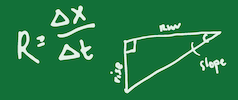Guiding students through Calculating Uncertainty
An instructor's guide to Calculating Uncertainty
Graham Baird (University of Northern Colorado)
Lisa Gilbert (Cabrillo College)
What should students get out of this module?
After completing this module, a student should be able to:
- Identify at least three sources of uncertainty in the Earth sciences
- Determine from a word problem if uncertainty a) is provided, b) must be estimated, or c) needs to be calculated
- Estimate or use Excel/Sheets to calculate the confidence interval of a value, as appropriate to the situation
Why are these math skills challenging to incorporate into courses?
The concept that most values are not precisely known and should include uncertainty is novel to students. How to determine uncertainty is typically covered in a statistics class, but some institutions do not require statistics for their Earth science majors or students may take the course relatively late in the major. The ability to interpret and calculate uncertainties may be assumed by many upper-level course instructors and considered outside the scope of any Earth science course, despite the topic's importance to making sense of data in the scientific literature and accurately reporting results in labs and undergraduate research projects.
What don't we include?
This module assumes the student has a basic understanding of statistics (TMYN-Majors Introductory Statistics), histograms (TMYN-Majors Histograms), and the normal curve (
Instructor resources
Support for teaching this quantitative skill
- A Beginners Guide to Uncertainty of Measurement from Essco
- Confidence Intervals teaching tips from UCLA
- Confidence Intervals Statistical Vignettes from Project EDDIE
- Understanding Uncertainty from Teaching Quantitative Skills in the Geosciences
Examples of activities that use this quantitative skill
- Using Ecological Forecasts to Guide Decision Making from Project EDDIE
- What is the volume of a debris flow? from Spreadsheets Across the Curriulum
